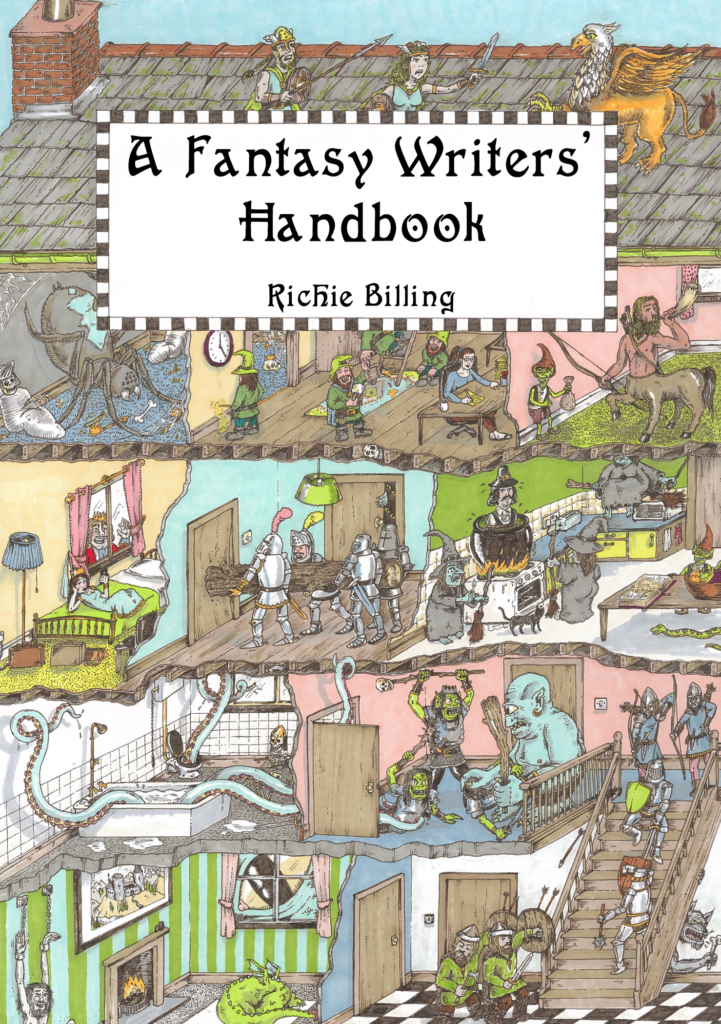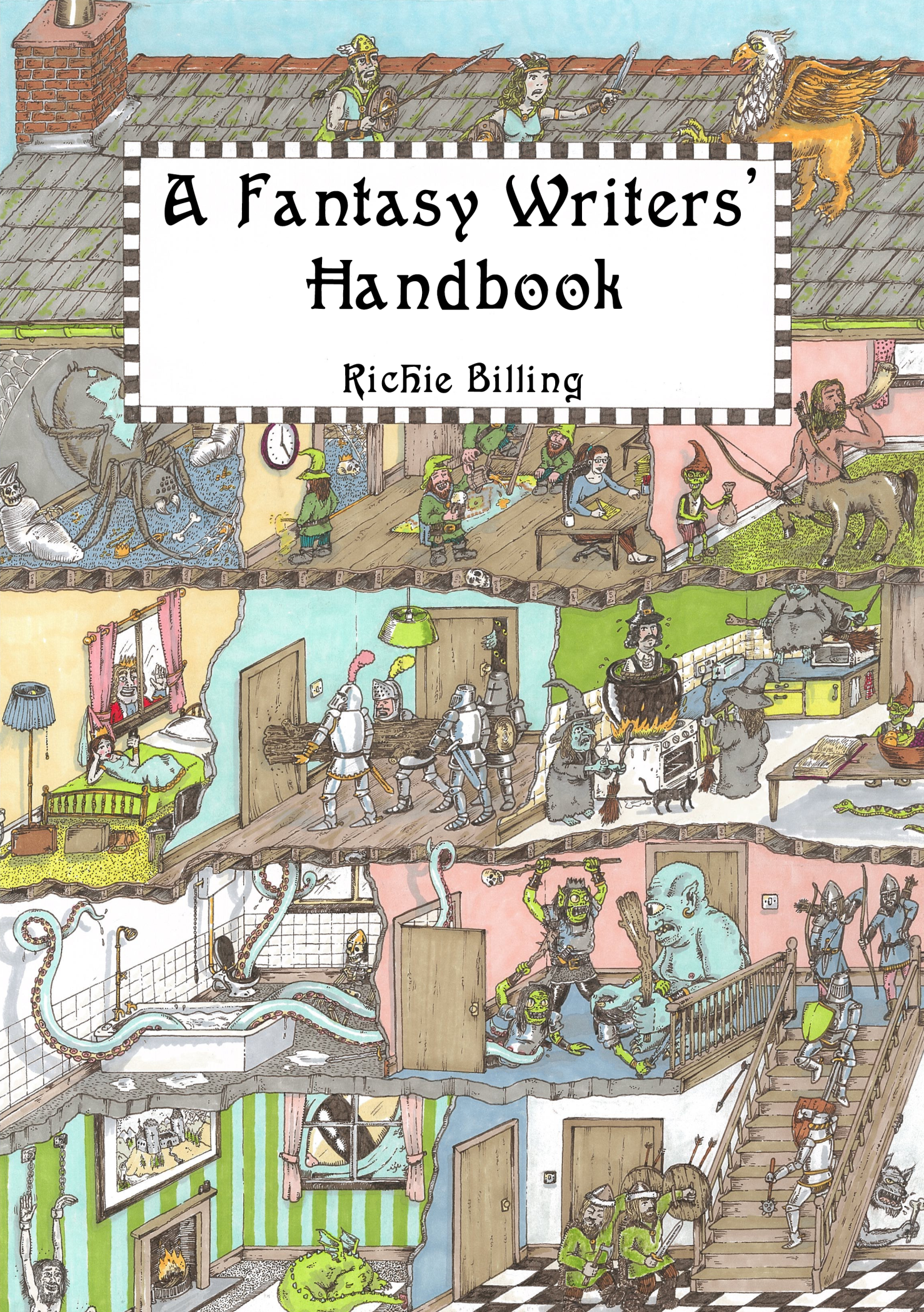Here’s the final teaser chapter from my new book, A Fantasy Writers’ Handbook, released on Wednesday 12th June! I wanted to include in this book topics that I never see covered in any other books on writing, and one of them is world-building. In the Handbook you’ll find three chapters on the topic: creating a world, revealing a world, and approaches to world-building. Today, I thought I’d share with you the first of the three. I hope you find it useful!
“…by using a light touch and conversational style Richie Billing has probably produced the seminal work on the subject.” — Charles Remington, Readers Favorite.
Read more reviews on Goodreads by clicking here
Creating A World
“I propose to speak about fairy-stories, though I am aware that this is a rash adventure. Faërie is a perilous land, and in it are pitfalls for the unwary and dungeons for the overbold.”
J.R.R. Tolkien
The world in which a story is set is important to any tale, particularly when it comes to fantasy. We read these kinds of stories to escape to new and unexplored worlds filled with possibilities, mysteries, and oddities. This chapter explores a few tools to help you build a world from scratch.
How do you build an entire world?
Let’s just say it’s going to take a little longer than seven days.
It’s easy to become caught up in the world-building process. For some, it consumes all of their attention, to the extent that they do a Tolkien and for years do nothing but detail everything down to the smells of each made-up flower. For others the world is a stage upon which the story takes place, with the world immediately around the characters the only parts that are revealed, an approach we’ll look at in more detail in the chapter that follows.
Generally, a story takes place either in the world we know and live in, or an entirely fictitious world, known as a ‘secondary world.’ As the focus here is on fantasy, it’s the creation of the latter we’ll explore.
Sanderson’s approach
Brandon Sanderson has his own approach to building a secondary world which focuses on two things: physical settings and cultural settings.
Physical settings
Physical settings encompass the things that exist if humans—or whatever species your characters are—did not exist. So for example the terrain, flora, fauna, weather, cosmology, geology, laws of physics.
In one of Sanderson’s own books, Mistborn: The Final Empire, the world is plagued by ash falls and dense mists which descend each night. Consider too Terry Pratchett and his Discworldbooks, which involves a world constructed on the back of a giant turtle floating through space. If you’re struggling to think of things, experiment with removing yourself from the physical world. What if the sky was green and the grass blue? For designing a world with oceans, rivers, mountains, swamplands, deserts and the like, look at my chapter on cartography in Part Two.
Cultural settings
This covers things influenced by man, or things that can be physically manipulated or changed, such as laws, politics, religion, government, language, structures, landmarks, philosophies, foods, music, fashion, folklore, weapons, technology, clothing, histories, rights, jobs, medicines … the list could go on.
It would be impossible to write a book of readable length if you covered every one of these things, and these are but a handful. The trick, it seems, is to pick a few and explore those in detail, perhaps bringing in other related settings in less detail.
The point is to channel your world-building into these settings, which in turn will open up doors to other aspects of the world. Piece by piece you’re revealing all those wonderful details you spent weeks and months conjuring.
George R.R. Martin is an expert when it comes to this approach. He writes his own songs and poems, goes into great detail about the food the characters eat, like the ‘bowl of brown’ in Flea Bottom. Some of his most iconic scenes are those at feasts and balls with vivid descriptions of songs and meals. It’s his use of songs and food that brings in histories and other facts about his world and he does it wonderfully.
If at all possible, Sanderson recommends seeking conflicts between the different cultural settings you choose to explore. It cannot be understated how crucial creating conflict is, and if you can intertwine conflict with your world-building you’re on the right path. For example, the clash between religion and science and jobs and technology. Having a character that cares passionately about a setting also provides a vehicle for revealing much about it, such as a character that loves to cook, like Talon in Raymond Feist’s Riftwar Cycle.
Again, have fun with cultural settings. Let your mind run free. Remove the shackles of reality. Anything is possible in a world of your own creation.
Draw a map
Even if, like me, you have the drawing ability of a goat, it really does help to sketch a map of your world, continent, region or city. Places will become grounded in your mind, giving you a more authoritative voice when you speak about them. It allows you to add crucial specificity, something that will enhance your story no end.
Your map doesn’t have to be a work of art. That all comes at the end when the writing is done. A crude outline of things is all you need. I’ve drawn one on the inside wall of my shed. If you would like to have a go at designing a map, there are a few pieces of software to help, such as https://inkarnate.com/
Ask questions
One way to help conjure a world is to ask questions: who, what, where, when, how. What type of magic exists in the world? How does someone gain the power to use it? Are there different kinds of abilities and spells? Is there a limit as to how much magic one person can use?
Such questions are invaluable. And try not to, as is tempting, to settle for the first thing that pops into your head. Push yourself to think of different options and possibilities. Keep asking ‘what if?’ And if you can’t think of an answer, worry not. Move on. Your subconscious will be working away on that, and one day the answer will, with a bit of luck, come to you. You’ll know it when you get it.
Here’s a very helpful list of world-building questions courtesy of the Science Fiction and Fantasy Writers of America. http://www.sfwa.org/2009/08/fantasy-worldbuilding-questions/
Explore and research
One of the best ways to come up with ideas for your world is to get out into the real world and explore. There’s nothing more powerful than actually seeing rolling hills and mountains, walking through forests and fields or busy city streets, hearing the noises of factories, the smells of the beach or a harbour. It allows you to write with experience.
Research is important to gain a greater understanding of how something works. If rivers form a big part of your story, learn how they work, the different types of river, how tributaries and meanders are formed, and so on. Again this gives your voice more authority and gives you the tools to describe things with confidence and conviction.
Build as you go
If you’re feeling impatient and don’t fancy doing any of the above, by all means, build as you go along. Write your story, see where it takes you. You may reach a point where your character needs to go to a new city. You can then ask yourself questions. How do they get there? What towns do they stop at along the way? What kind of city is it they’re going to? A thriving metropolis or a besieged ruin? What’s the population size? What’s the economy built upon? The downside with this approach is you’ll probably have to revert to ensure consistency and to fill in any gaps.


Leave a Reply